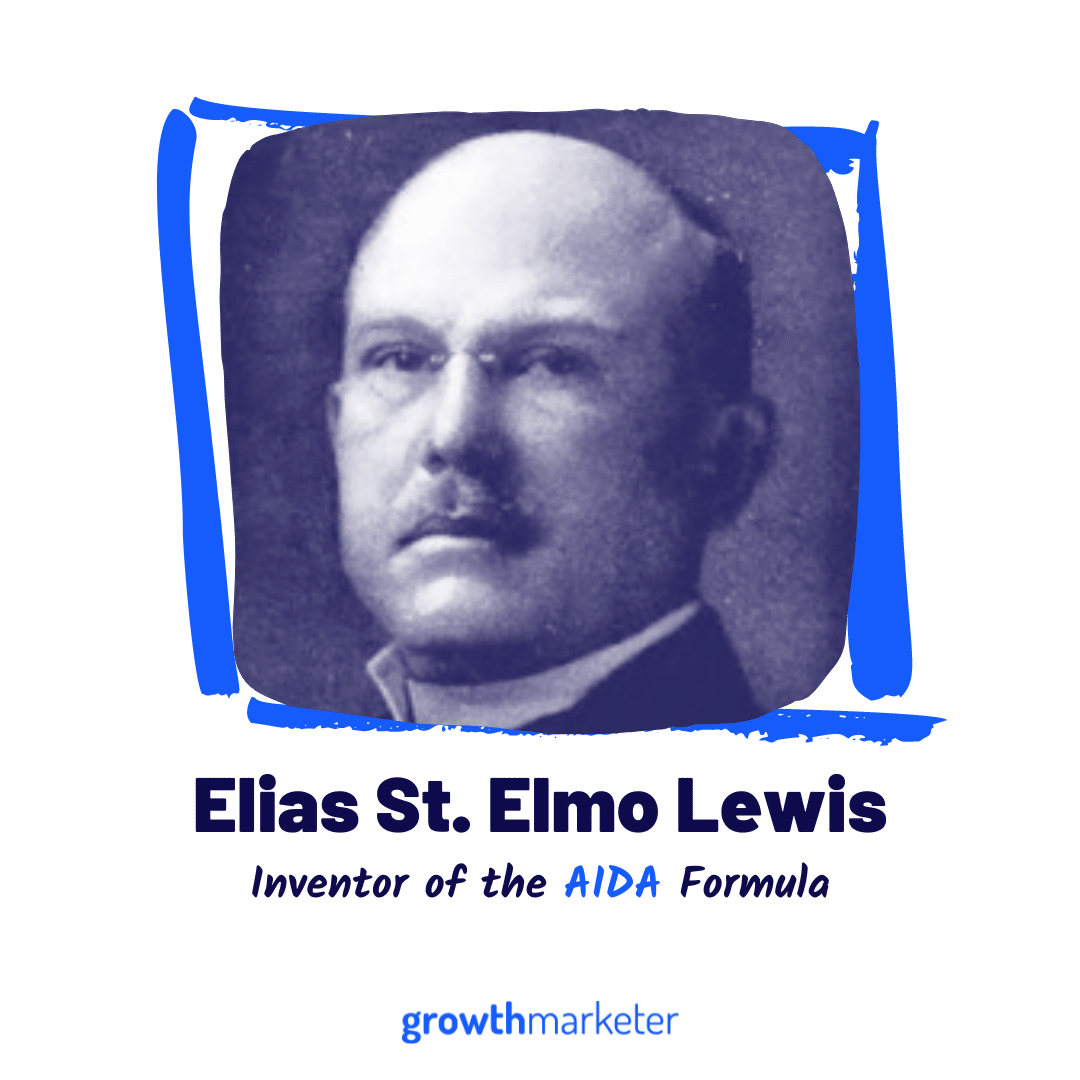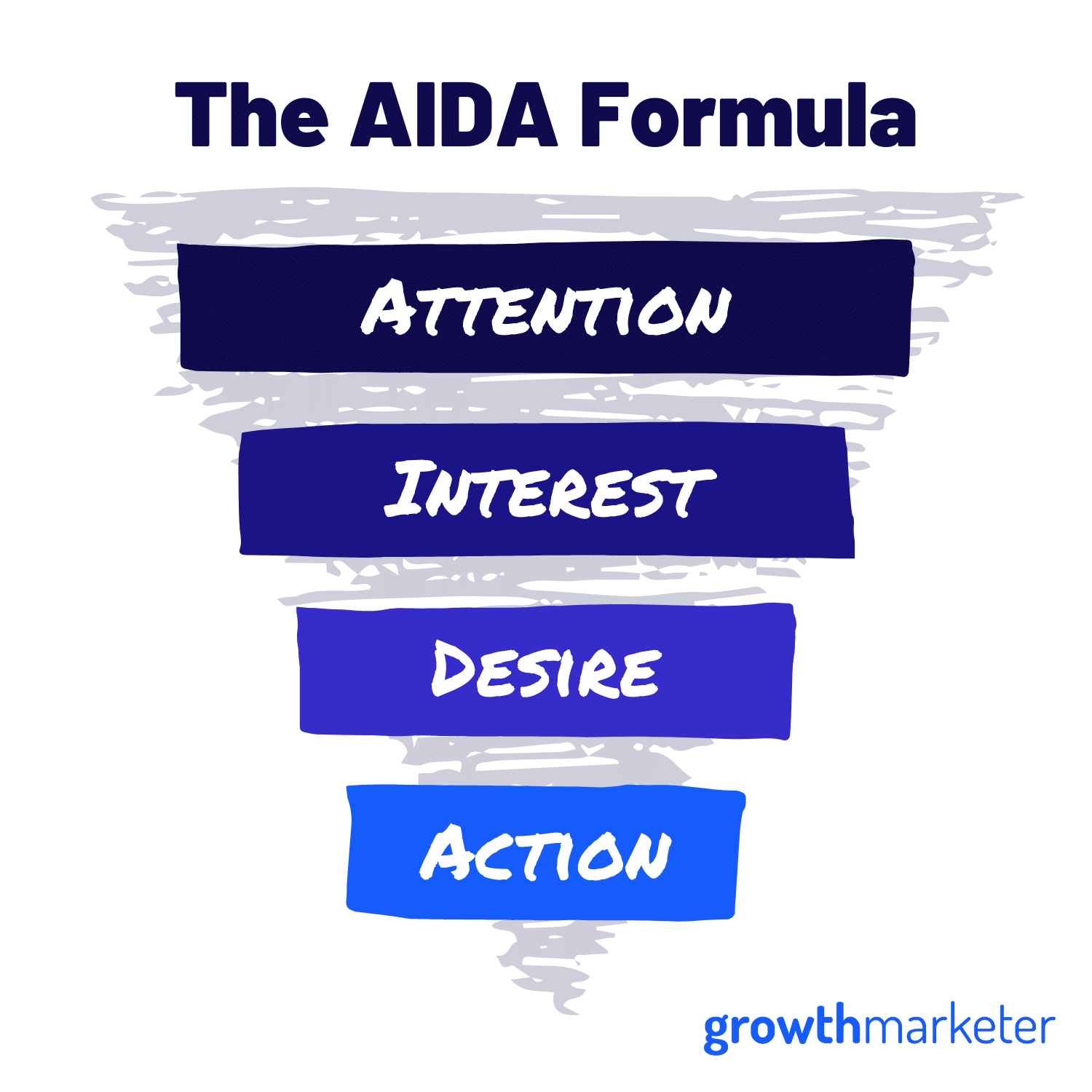Every copywriter wants to get results.
AIDA stands for Attention, Interest, Desire, and Action, and it is one of the oldest copywriting formulas in the world. While the media that carries writing has changed – the AIDA formula remains one of the most popular ways to use writing to attract and sell on the global stage.
The formula calls on a writer to get the readers’ attention with persuasive writing, attract the reader’s interest in the related product or service, make the reader desire the product or service, and, finally, call on the reader to take action.
AIDA is used in every type of marketing and advertising material. It is extremely effective and has been used for more than a century. While many things can’t evolve with a changing media landscape, AIDA is just as relevant today as it was 100 years ago.
What is the AIDA formula?
The concept of AIDA was born in 1898 when Elias St. Elmo Lewis, who is an inductee of the Advertising Hall of Fame, wrote a column about three advertising principles that he had used throughout his career.

That column appeared in one of the most influential 19th-century American magazines, The Inland Printer. It stated that to be successful, all written advertisements should follow a certain formula, which became known as AIDA.
The basics of AIDA are simple. Anyone who can write will be able to apply it to their marketing materials. After more than a century of use, we know it really works.
Stages of the AIDA formula
Using AIDA helps writers to catch a reader’s attention, keep them interested, create desire for whatever the subject of the writing is, and then motivate them to take action.
In fact, most people don’t know what the writing they read is doing to their mind – they just keep reading because they are interested!

Here is a breakdown of the steps in AIDA, and how to use them when writing great copy:
Attention
The first thing writers need to attract attention is a compelling headline.
Once the work captures attention, writers need to maintain interest, then create a desire for the related product or service, and finally motivate the reader to take action.
There are 3 ways to attract the viewer’s attention.
When AIDA was young, a headline was the way to go. Now, a video thumbnail, and a hero image also help to capture a viewer’s attention.
Interest
As we all know from looking at ‘time on site’ most visitors have short attention spans.
Writers need to keep a viewer interested in reading the copy by making sure that they are writing for the scanners and the scrollers.
The opening paragraph is also important. Writers need to maintain a person’s interest after catching their attention.
The first 300 words need to be engaging so that the rest of the work gets attention, and the reader is moved further into the formula (and eventually takes action).
For videos, the script has to open big. Get right to the point, and try to hook the viewer with the first 200 words.
Desire
Desire is the basis of successful marketing. People won’t buy anything if they don’t want it. There are three basic ways of cultivating desire in a reader, or media consumer.
These include showing a product’s benefits, explaining how the product can change customers’ life or how it can solve a problem. The last way is showing the results other people achieved to give the product or service real-world credibility.
Think about the early days of home goods. A washing machine could cut hours out of a person’s work in the home every day. As a writer, you need to make sure the reader understands how valuable that washing machine is!
Action
Now, it’s time to get an audience to take action.
You want the Call To Action (CTA) to be extremely clear. In the internet age, a bright-colored button with some action-orientated copy is pretty common – and of course, the goal is to get people to click on it.
On the other hand, your CTA may be a subheading and a paragraph that talks about all the reasons why the reader needs to take action.
In addition, writers can also create urgency. For example, a product that is on sale (especially a big sale) creates urgency. Your copy would point out that prices will never be this low again – so buy now!
According to the book Influence by Robert Cialdini, six elements can be applied to copywriting.
One of them is scarcity. When something is limited or scarce, it makes people fear loss even if they don’t really need it. If it’s scarce, people will see it as more valuable than if it’s easy to obtain.
Writers and marketers can also add incentives, bonuses, or premiums for products what is called the law of reciprocity. By including free items with a product, it can attract buyers who see it as a unique deal.
Demonstrating products in action and being used by a customer with before and after photos or videos, is also a common way to show that a product or service is worth buying. If you want a reader to take action – they need to know they will get what they want.
Why the AIDA formula matters in copywriting
A writer needs to understand a reader’s motivations and lifestyle to deliver a marketing message that sells a product or service in a short amount of time.

AIDA, or any other marketing formula, will only work when the writer’s message fits a reader’s worldview. If you are selling washing machines, you need to know where to put the message.
The ads that Coca-Cola uses are successful examples of the AIDA model – which should come as no surprise, give the company’s ad budget.
Popular and successful
Coca-Cola attracts attention by blasting out its message to the masses using a variety of mediums including the Internet, TV, paid digital ads, ads before movies begin at the movie theater, and more.
The brand builds customer’s interest by mentioning the ingredients from its beverages in each advertisement such as how great Diet Coke tastes without all the calories. It creates a desire in its customers by showing happy people drinking the product.

Diet Coke ads show cool customers drinking the beverage, aiming to create desire in audiences to do the same. Coca-Cola spends nearly $4 Billion in global advertising and each year that number continues to grow.
When combining mass exposure with availability with low prices, the brand succeeds in creating Action, which helps Coca-Cola maintain its position as one of the top beverage brands in the world.
Tech giant Apple also uses AIDA throughout its website to encourage consumers to join and expand their presence in its product ecosystem.
Variations to the AIDA formula
Some consider the AIDA model to be a little too simple to describe all the marketing strategies that exist today. Different variations to the classic AIDA formula exist, and are employed based on the media.
AIDCA describes how to cultivate Attention, Interest, Desire, Conviction, and Action. Adding conviction to help build trust and convince readers that the information they’re reading is true, and it is safe to act.
NAITDASE means Need, Attention, Interest, Trust, Design, Action, Satisfaction, and Evaluation, while AIDCAS mentions Action, Interest, Desire, Confidence, Action, and Satisfaction.
Reach, Engage, Activate, and Nurture is known as REAN.
All of these models may help writers and marketers deliver a more powerful message, and get the results they need. Like any project, execution is everything, and the person doing the writing can make or break a campaign.
Why the AIDA formula keeps working
When writers understand a buyer, the AIDA formula, and know how to use headlines, body copy, and calls-to-action, the work will get results.
As long as you are starting with a compelling offer, there is no doubt that AIDA can help a copywriter to better format their ideas – but plugging into the consumer remains the most important aspect of writing successful marketing copy!
The robots have taken over
As a final thought on just how far we’ve come with the AIDA formula, now there are even AI-powered copywriting tools that will implement it for you.

One of my favorites is Jasper, which has an AIDA template ready to go. Take Jasper for a spin right here if you want to write copy even faster! In fact, Jasper even helped me write this article. 😉





